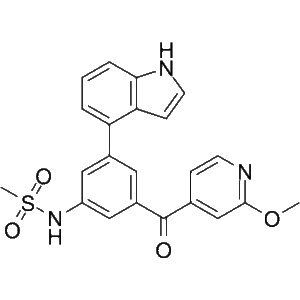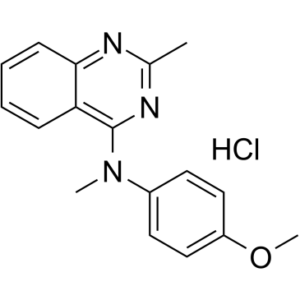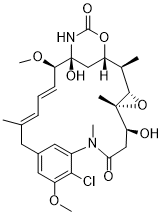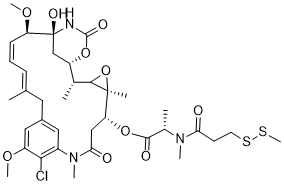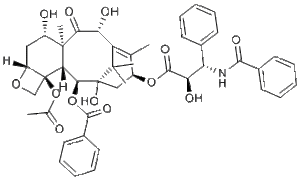LP-261 is a novel and potent mitotic/tubulin inhibitor with potential anticaner activities.
Verubulin hydrochloride (MPC-6827 hydrochloride), the hydrochloride salt of verubulin, is a quinazoline-based and BBB (blood brain barrier) permeable microtubule-disrupting agent with potential antitumor activity.
D-64131, an aroylindole analog, is a novel, oral and potent inhibitor of tubulin polymerization. As a mitotic inhibitor, D-64131 competitively binds to the colchicine binding site of αβ-Tubulin.
Maytansinol (formerly also known as NSC-239386; Ansamitocin P-0), is a potent and natural microtubule depolymerizing agent or antimitotic agent with anticancer activity.
Monomethyl auristatin F (also known as MMAF) is a highly potent tubulin/antimitotic inhibitor and an antineoplastic agent used as a warhead in ADCs (antibody-drug conjugates) such as vorsetuzumab mafodotin and SGN-CD19A.
Auristatin E, a synthetic analog of dolastatin 10, is a novel and highly cytotoxic tubulin inhibitor with antitumor activity; it is a MMAE analog and cytotoxin used in Antibody-drug conjugates.
DM1-SMe is a potent maytansinoid microtubular inhibitor and an unconjugated DM1 as a mixed disulfide with thiomethane to cap its sulfhydryl group.
Monomethyl auristatin E (also known as MMAE; SGD-1010), a dolastatin 10 derivative, is a novel, synthetic and potent antimitotic/antitubulin agent which blocks the polymerization of tubulin, due to its high toxicity, it cannot be used as a drug itself; instead, it is linked to a monoclonal antibody (MAB) which directs it to the cancer cells.
10-Deacetyltaxol (also called 10-Deacetylpaclitaxel), the 10-deacetylated form of paclitaxel, is a taxane analogue and impurity of Paclitaxel extracted from Taxus wallichiana Zucc with anticancer activities.
